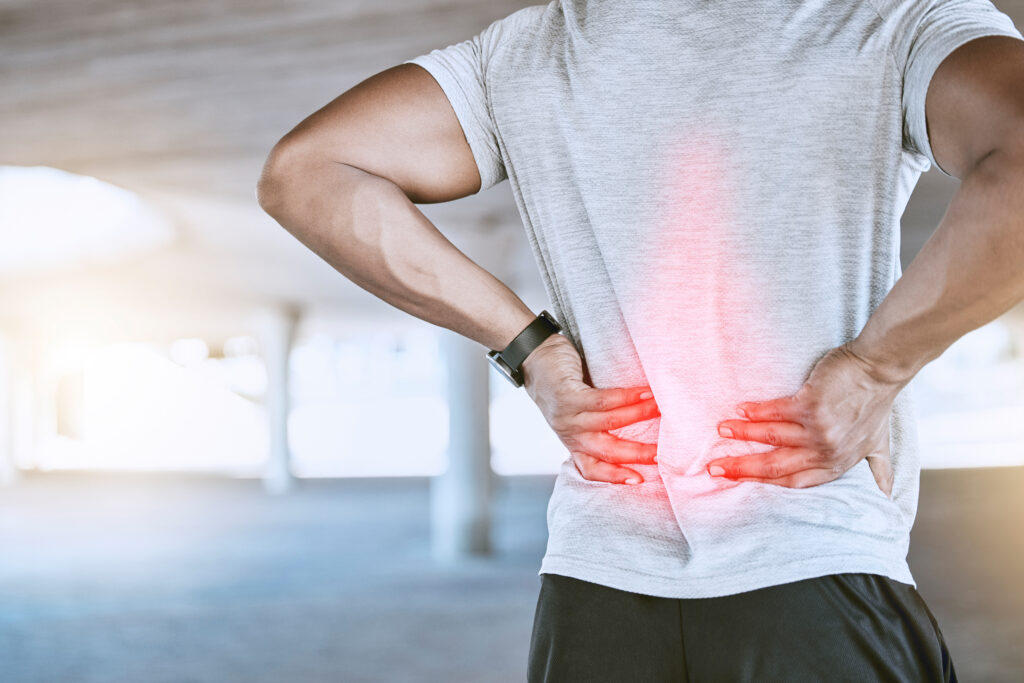Chronic back pain can significantly disrupt your daily activities, but it's important to know that you don't have to live with it forever. As a local chiropractor, I want to help you understand that there are numerous natural strategies available to alleviate your discomfort and enhance your overall health.
One effective approach is engaging in regular low-impact exercises, which can help strengthen your back muscles and improve flexibility. Additionally, making simple ergonomic adjustments in your workspace can make a big difference in how your body feels throughout the day.
Incorporating mindfulness techniques, such as meditation and deep breathing, can also provide relief and promote relaxation. Furthermore, seeking professional chiropractic care can be a game-changer in your recovery process. Through gentle spinal adjustments and targeted therapies, we can work together to address the root causes of your pain.
The question remains: which of these methods resonates with you? Let's explore these options together and find the best path to a pain-free life.
Regular Exercise
As a local chiropractor, I want to share the importance of incorporating regular exercise into your life, not only for strengthening your back but also for enhancing your overall wellness. Engaging in physical activity can greatly improve your flexibility, build muscle strength, and boost your endurance, all of which are vital in alleviating back pain.
You don't have to commit to a rigorous gym routine every day; even gentle activities such as walking, swimming, or practicing yoga can lead to significant improvements.
Begin with low-impact exercises that encourage mobility without putting strain on your back. Stretching is particularly crucial, as it helps to loosen tight muscles and enhance your range of motion. Pay special attention to stretches that target the back, hips, and legs, since these areas are often linked to discomfort.
It's also beneficial to include core-strengthening exercises, such as planks and bridges, into your routine. A strong core supports your spine and can significantly reduce the risk of experiencing pain.
I recommend aiming for at least 150 minutes of moderate aerobic activity each week. This can be broken down into manageable sessions, whether that's 30 minutes a day, five days a week, or any combination that suits your schedule.
Always listen to your body; if something doesn't feel right, it's important to modify your approach or seek advice from a healthcare professional.
Remember, consistency is crucial. By making exercise a regular aspect of your daily routine, you'll likely notice improvements not just in your back pain, but also in your energy levels and overall mental health.
Embrace this journey towards wellness, and you'll find yourself on the path to a healthier, happier life. As your chiropractor, I'm here to support you every step of the way.
Proper Posture
As a local chiropractor, I want to emphasize the importance of maintaining proper posture to prevent and alleviate back pain. The way you position your body while sitting, standing, or moving can significantly affect the health of your spine.
Many people may not realize that poor posture can lead to muscle strain, tension, and even chronic pain. By being mindful of your alignment and how you hold your body, you can make a meaningful difference in your overall well-being.
Here are three essential tips I encourage you to incorporate into your daily routine to promote proper posture:
- Sit Smart: When you find yourself sitting, make sure your feet are flat on the ground and your knees are at or slightly below hip level. Opt for a chair that supports your lower back and encourages an upright posture. Avoid the common habit of slouching or leaning forward, as this can contribute to discomfort over time.
- Stand Tall: As you stand, distribute your weight evenly across both feet. Keep your shoulders back and relaxed, aligning your ears directly over your shoulders. This stance is crucial for maintaining the natural curve of your spine, which supports your body's alignment and function.
- Move Mindfully: When lifting objects, remember to bend at your knees instead of your waist. Keep the item close to your body and rely on your leg muscles to lift, rather than straining your back. This technique not only reduces the risk of injury but also protects your spine from undue stress.
By incorporating these strategies into your daily life, you can help safeguard your spine and enhance your overall health.
If you have any questions or would like to learn more about how chiropractic care can support your journey to better posture, don't hesitate to reach out!
Stretching Techniques
As a local chiropractor, I want to emphasize the importance of regular stretching for maintaining a healthy and flexible back.
Many patients may not realize how crucial it's to incorporate targeted stretching exercises into your daily routine. These exercises can significantly relieve tension and enhance your overall mobility, which is vital for your well-being.
Let's delve into some effective stretching techniques that could truly alleviate your back pain and promote a healthier spine.
Importance of Regular Stretching
As a local chiropractor, I often see patients who overlook the importance of stretching in their daily routines. However, I want to emphasize that incorporating regular stretching can significantly alleviate back pain and enhance your overall well-being.
Stretching not only enhances flexibility and reduces muscle tension, but it also promotes better posture—key components for maintaining a healthy back.
Here are three key benefits of consistent stretching that I encourage my patients to embrace for effective back pain relief:
- Increased Flexibility: When you stretch, you improve your range of motion, making everyday activities less painful and more manageable. Enhanced flexibility allows your muscles to function more efficiently, which in turn reduces the strain on your back and minimizes discomfort.
- Reduced Muscle Tension: Many people experience tightness in the muscles surrounding the spine. By incorporating regular stretching into your routine, you can alleviate this tension, which frequently contributes to discomfort and pain. Loosening these muscles can lead to significant relief and a more comfortable daily experience.
- Improved Posture: Stretching helps promote better alignment of your spine and shoulders. This is vital, as poor posture can lead to slouching and hunching, which are often culprits of back pain. By maintaining good posture through stretching, you can reduce strain on your back muscles and enhance your overall health.
I encourage you to integrate these benefits into your daily routine for a healthier back and improved quality of life.
Targeted Stretching Exercises
As your local chiropractor, I want to emphasize the importance of incorporating targeted stretching exercises into your daily routine to alleviate back pain effectively. Stretching isn't just about feeling good; it plays a crucial role in enhancing your overall flexibility and reducing muscle tension, which can significantly contribute to your discomfort.
Let's start with a simple yet powerful stretch known as the cat-cow stretch. To do this, position yourself on your hands and knees. Arch your back upwards like a cat, then gently dip it down while lifting your head. This movement not only helps to mobilize your spine but also encourages blood flow to the area, promoting healing.
Next, consider trying the seated forward bend. Sit down with your legs extended straight in front of you. As you reach for your toes, make sure to keep your back straight. This stretch specifically targets your hamstrings and lower back, areas that often hold tension and contribute to pain.
Another fantastic stretch is the child's pose. Kneel on the floor, sit back on your heels, and stretch your arms forward. This position is incredibly soothing and helps to release tension in your back and hips, giving you a moment of relaxation.
Lastly, don't forget about the piriformis stretch. While lying on your back, cross one ankle over the opposite knee and gently pull the uncrossed leg toward your chest. This stretch targets the piriformis muscle, which can be a source of discomfort if it becomes tight.
By incorporating these targeted stretches into your everyday life, you can significantly ease discomfort and promote a healthier spine.
Heat and Cold Therapy
As a chiropractor, I want to share with you the powerful benefits of heat and cold therapy in managing back pain. Many of my patients find these methods to be game changers in their healing journey.
Heat therapy works wonders by relaxing and soothing tight muscles, promoting blood flow and easing discomfort. On the other hand, cold therapy is effective in reducing inflammation and numbing sharp pain, which can be especially helpful after an injury.
Let's delve into how you can incorporate these therapies into your routine for maximum relief. By understanding the right application of heat and cold, you can enhance your healing process and support your overall well-being.
Benefits of Heat Therapy
As a local chiropractor dedicated to helping you find relief from back pain, I want to introduce you to the benefits of heat therapy. Many of my patients have found this natural method to be a comforting and effective way to manage discomfort.
When you apply heat to your back, it works wonders by relaxing tense muscles and enhancing blood circulation. Here are three significant benefits of incorporating heat therapy into your routine:
- Muscle Relaxation: The warmth from heat therapy penetrates deeply into your muscles, helping to alleviate stiffness and promote relaxation. Many patients report that their backs feel more flexible and significantly less painful after using heat.
- Increased Blood Flow: Applying heat causes blood vessels to dilate, which boosts circulation to the affected area. This increased blood flow delivers essential nutrients and oxygen, supporting the healing process and helping to reduce inflammation.
- Pain Relief: Heat has a soothing effect that can help block pain signals sent to your brain, providing immediate relief. Patients often experience a marked decrease in pain levels, allowing them to engage more comfortably in their daily activities.
Incorporating heat therapy into your self-care routine is a simple yet effective way to manage chronic back pain.
Whether you opt for a heating pad, a warm bath, or a hot compress, you'll discover a nurturing approach to easing your discomfort.
As your chiropractor, I encourage you to explore this natural healing method as part of your journey to better health.
Benefits of Cold Therapy
As a local chiropractor, I want to share with you the benefits of cold therapy, especially for managing back pain. This technique can work hand in hand with heat therapy to provide comprehensive relief.
When you apply cold to an affected area, it constricts blood vessels, which effectively reduces inflammation and swelling. This is particularly beneficial immediately after an injury, as it can numb sharp pain and offer instant comfort.
Cold therapy also plays a crucial role in alleviating muscle spasms. Tight muscles can lead to discomfort, and applying cold can help relax these muscles, making movement easier.
For those dealing with chronic pain flare-ups, cold therapy is a straightforward and effective solution that you can easily implement at home, without the need for special equipment.
One of the great things about cold therapy is its versatility; you can easily incorporate it into your daily routine. Whether you're at home, at work, or on the go, using cold packs or other forms of cold therapy is convenient and accessible.
Overall, cold therapy is a valuable tool in your pain management toolkit, helping you feel better and return to your daily activities with greater ease and comfort.
If you have any questions on how to effectively use cold therapy, please feel free to ask during your next visit!
Application Techniques Explained
As a local chiropractor dedicated to your well-being, I want to share some effective techniques for pain relief using heat and cold therapy. Understanding how to use these methods can significantly aid in your healing process, especially if you're new to chiropractic care and natural healing.
Let's break it down:
1. Cold Therapy: To start, I recommend using ice packs or cold compresses. Simply wrap ice in a cloth and apply it to the painful area for 15-20 minutes. This method is excellent for reducing inflammation and numbing discomfort.
Just be sure to take breaks between applications—this is important to protect your skin from potential damage.
2. Heat Therapy: If you're dealing with muscle tightness or chronic pain, heat can be your best friend. You can use a heating pad or a warm towel and apply it to the affected area for about 15-20 minutes.
Heat therapy works by increasing blood flow to the area, which promotes healing and helps relax tight muscles. Just be mindful that the heat isn't too intense to avoid burns.
3. Alternating Heat and Cold: A combination of both therapies can be particularly beneficial. Start with cold therapy for 15 minutes, and then switch to heat for another 15 minutes.
This alternating approach can effectively manage pain and accelerate your recovery by addressing both inflammation and muscle tension.
Incorporating these techniques into your routine can complement the chiropractic care you receive and enhance your overall healing journey.
If you have any questions or need guidance on how to apply these therapies effectively, feel free to reach out. Your health is my priority!
Mindfulness and Meditation
As a local chiropractor, I want to share with you the powerful benefits of mindfulness and meditation in managing back pain. These practices can serve as essential tools in your journey toward better health. By fostering a deeper awareness of your body and its sensations, mindfulness and meditation can help you effectively manage pain and reduce stress. Focusing on the present moment can significantly lower anxiety and tension, both of which often contribute to discomfort.
To get started, I recommend setting aside a few minutes each day for mindfulness or meditation. Find a quiet, comfortable space where you can sit without interruptions. Close your eyes and take slow, deep breaths. As you breathe in and out, concentrate on the rhythm of your breath and the sensations in your body. If your mind begins to wander, gently redirect your focus back to your breathing. This simple practice can cultivate a sense of calm and help you momentarily disconnect from any pain you may be experiencing.
Another effective technique is body scan meditation. This involves mentally checking in with different parts of your body, starting from your toes and gradually moving up to your head. As you do this, take note of any areas of tension or discomfort. This exercise not only enhances your awareness of your body but also promotes acceptance and relaxation, which are vital for healing.
Incorporating mindfulness into your daily routine can profoundly impact how you perceive and cope with back pain. It empowers you to respond thoughtfully to discomfort rather than react impulsively. With consistent practice, you may find that you're better equipped to manage your pain and enhance your overall well-being.
As your chiropractor, I encourage you to explore these natural healing techniques alongside your chiropractic care. Together, we can work toward a healthier, more balanced life.
Ergonomic Adjustments
As a local Chiropractor, I want to emphasize the importance of making ergonomic adjustments in your workspace to help alleviate back pain and enhance your overall comfort. Many people underestimate how significantly their work environment can impact their posture and well-being.
By implementing a few straightforward changes, you can establish a workspace that supports your body and promotes healthy alignment throughout your day.
Here are three essential ergonomic adjustments to consider:
- Chair Height: It's crucial to ensure that your chair is adjusted to the right height. Your feet should rest flat on the floor, and you may need a footrest if your chair is too high. Ideally, your knees should be positioned at or slightly below your hips. This arrangement encourages proper circulation and minimizes strain on your lower back, which can be pivotal in preventing discomfort.
- Desk Setup: The placement of your monitor is vital. Position it at eye level, about an arm's length away, so your neck stays straight and you avoid the tendency to lean forward. If you're working on a laptop, consider using a stand to elevate the screen or connect an external keyboard. This will help you maintain a neutral wrist position, reducing the risk of repetitive strain injuries.
- Keyboard and Mouse Placement: Ensure that your keyboard and mouse are within easy reach. You should be able to use them comfortably without having to stretch your arms. Your elbows should be bent at about a 90-degree angle, and it's important to keep your wrists straight while typing. This simple adjustment can significantly reduce tension in your upper body.
By making these ergonomic adjustments, you can take proactive steps towards enhancing your posture and overall health.
Professional Treatments
As a local chiropractor dedicated to helping our community, I want to share how chiropractic care can play a vital role in addressing persistent back pain, especially when self-care methods aren't enough. If you're experiencing ongoing discomfort, I encourage you to seek professional guidance. We're here to offer you tailored treatments to alleviate your pain and improve your quality of life.
One of the primary services we provide is spinal adjustments. These adjustments are designed to relieve pressure on nerves and restore proper alignment in your spine. Many patients find significant relief and improved mobility after just a few sessions. We focus not only on alleviating pain but also on enhancing your overall function.
In addition to adjustments, we often incorporate physical therapy techniques into our treatment plans. Our goal is to assess your individual condition and create a personalized exercise program that strengthens your back and increases flexibility. This approach not only helps to reduce current pain but also aids in preventing future issues from arising.
For those dealing with severe pain, we may discuss options such as complementary therapies. While we focus on natural healing, there are times when certain medications or injections might be necessary to manage symptoms effectively. We work closely with you and your primary healthcare provider to ensure a comprehensive approach to your health.
Additionally, we recognize the benefits of alternative treatments such as acupuncture and massage therapy. These therapies can relax tight muscles and enhance circulation, providing further relief from discomfort.
Ultimately, our mission is to empower you by finding the right combination of treatments that suit your unique needs. Don't hesitate to reach out and explore the various options available to you. Your journey toward relief and wellness is just a consultation away, and we're here to support you every step of the way.
Conclusion
As your local chiropractor, I want to share some effective strategies that can help you alleviate chronic back pain. By integrating these seven approaches into your daily routine, you can make significant progress toward a more comfortable life.
First, regular exercise and maintaining proper posture are crucial. These practices not only strengthen your back but also promote overall spinal health. Incorporating stretching and heat therapy can provide immediate relief and enhance flexibility.
Additionally, mindfulness techniques can be beneficial in reducing tension and stress that may contribute to your pain. It's also important to make ergonomic adjustments to your workspace—this can help create a more supportive environment for your back.
As always, don't hesitate to seek professional treatments, such as chiropractic adjustments, when necessary. Remember, taking proactive steps today can pave the way for a healthier, pain-free tomorrow. Your back deserves the best care, and I'm here to guide you on that journey!



